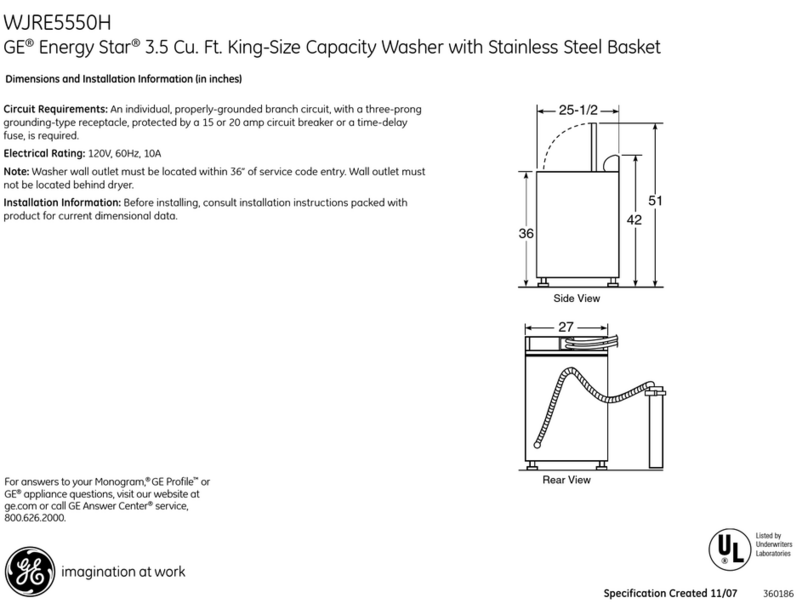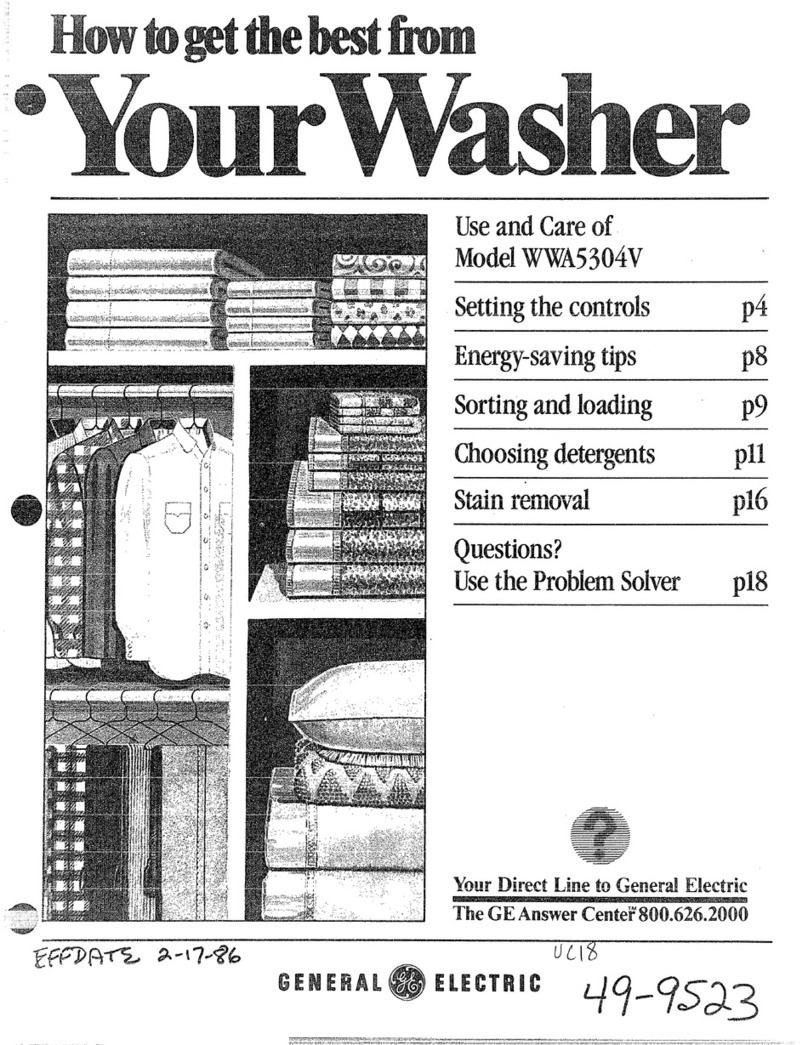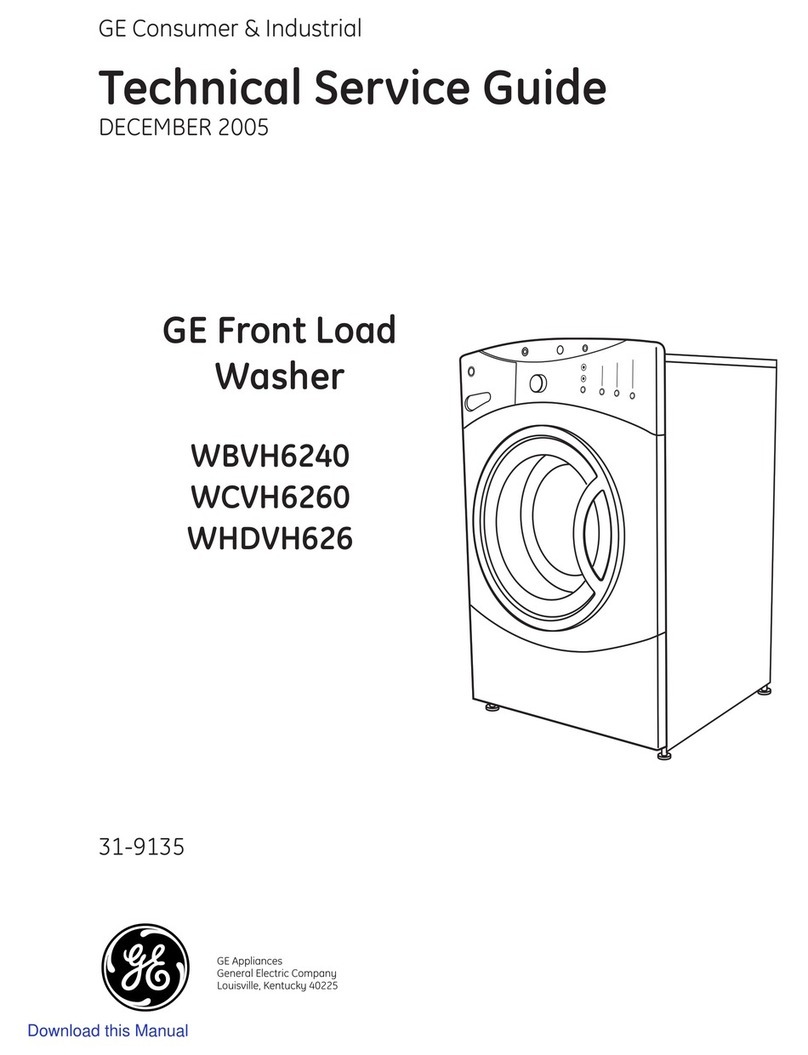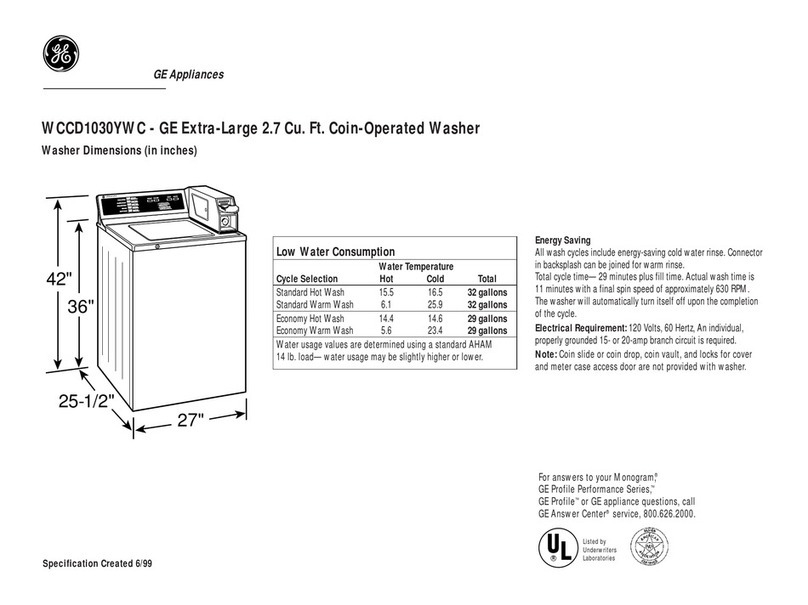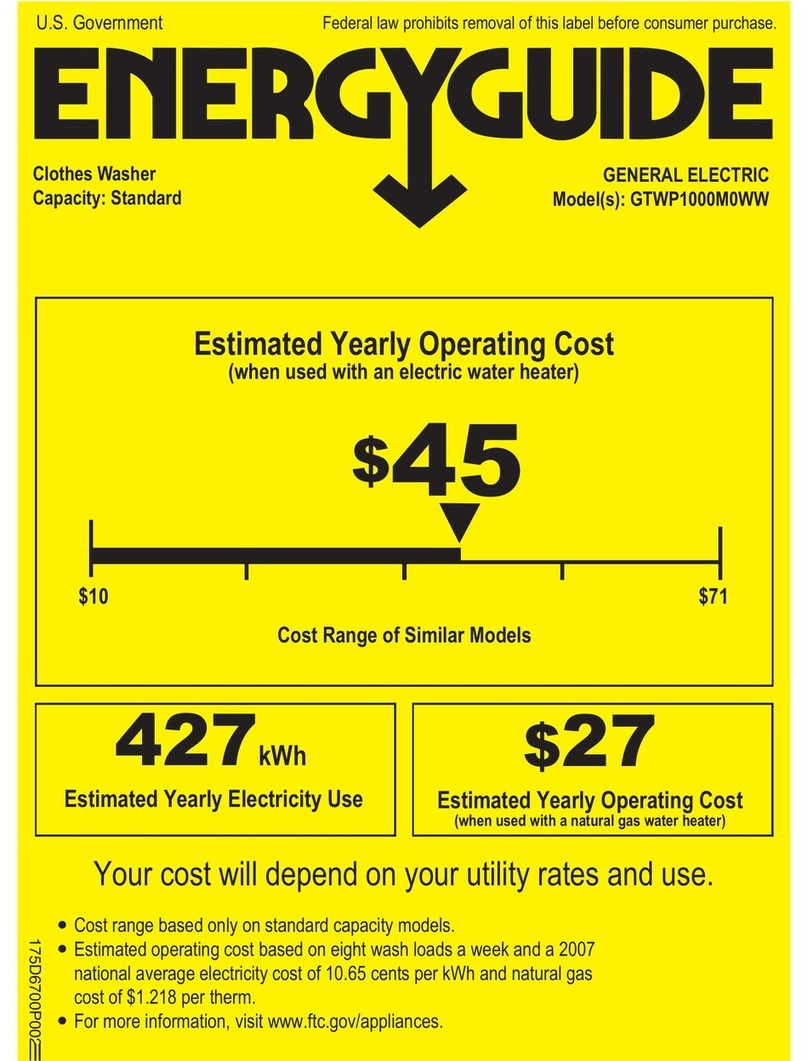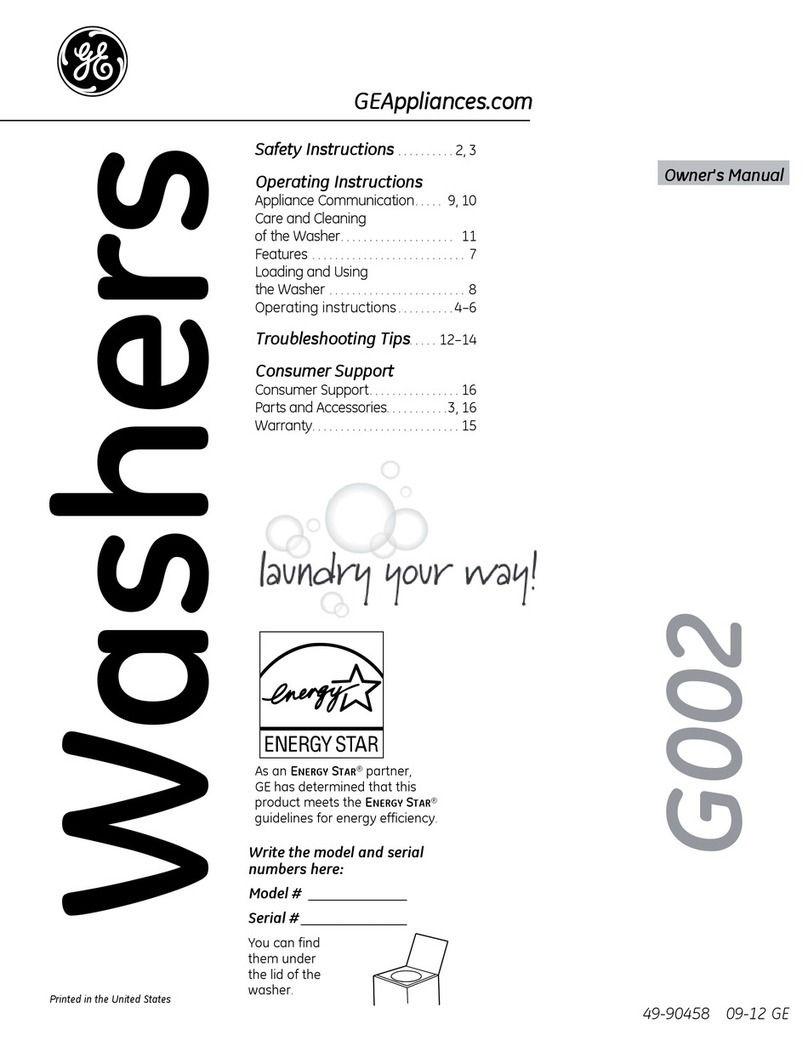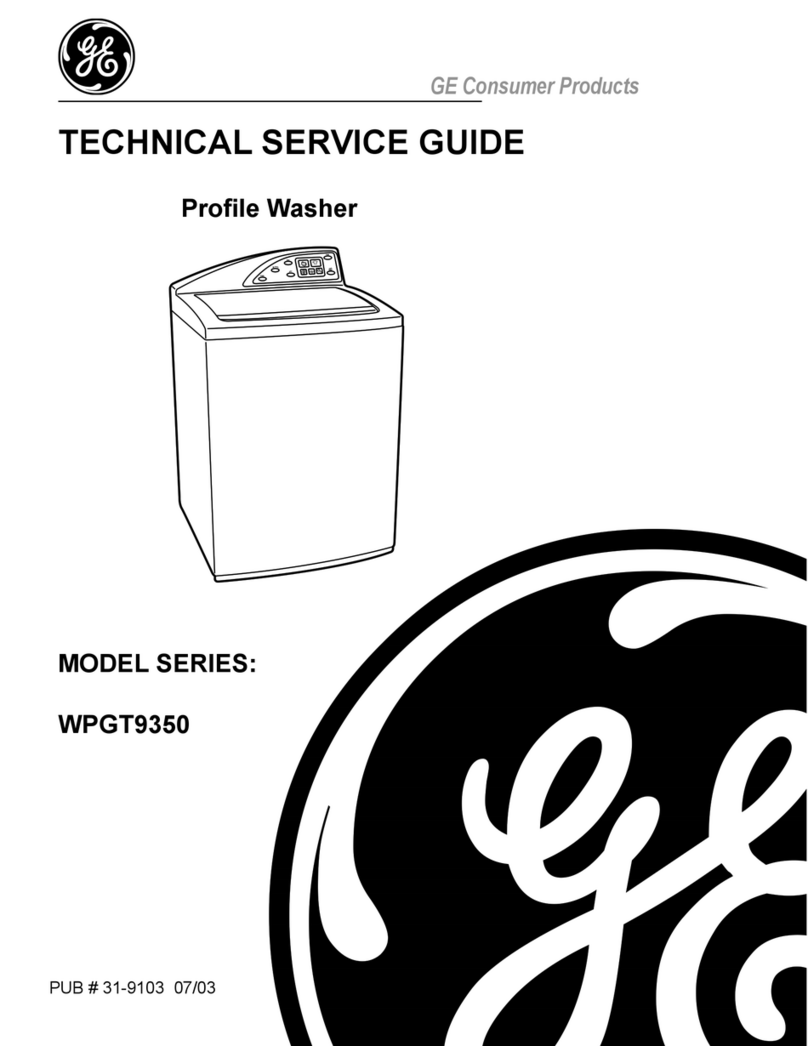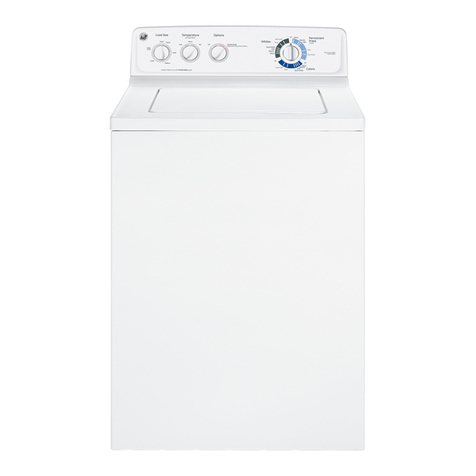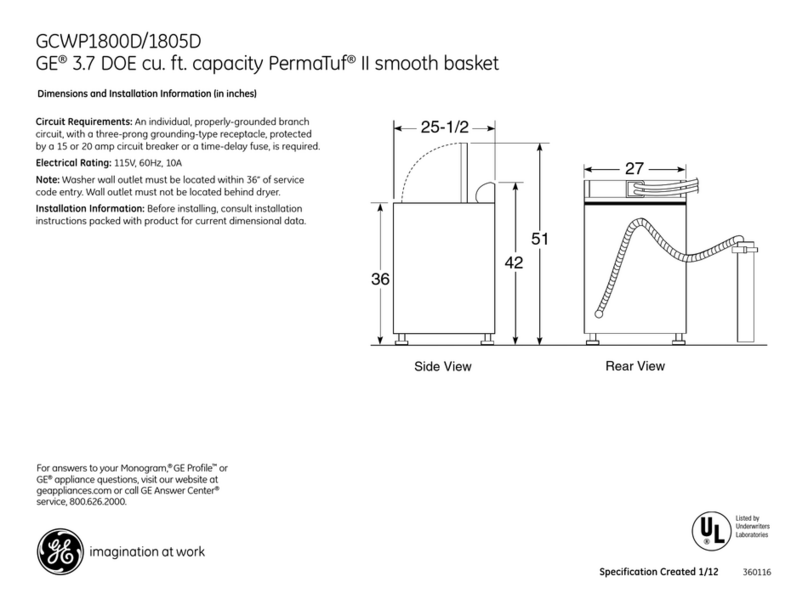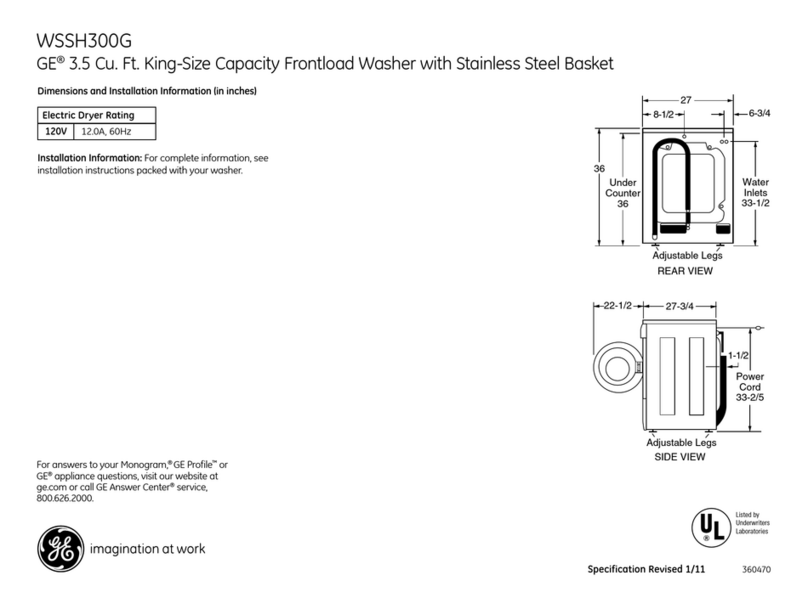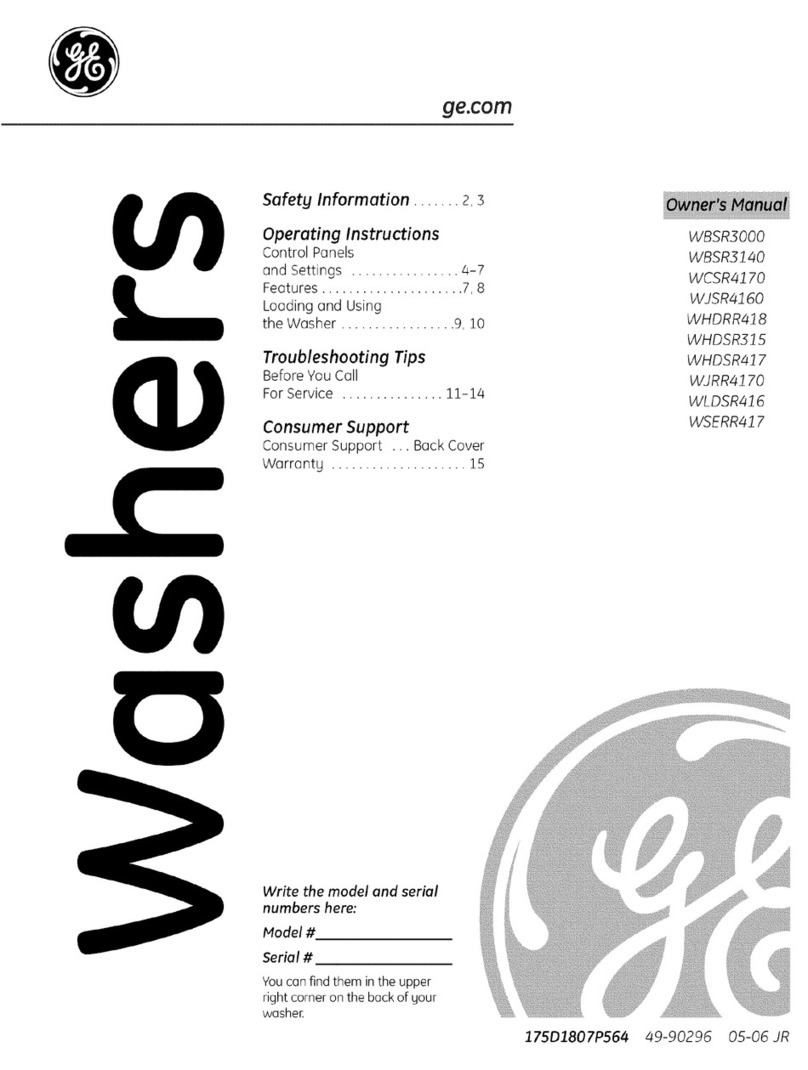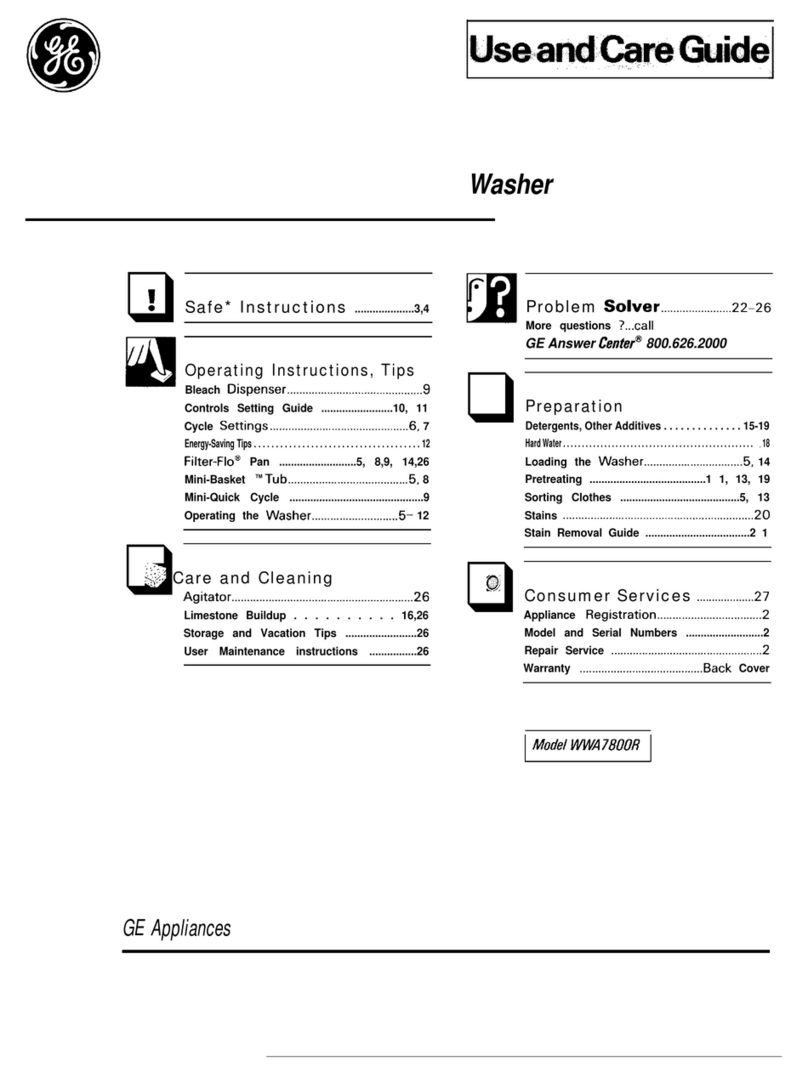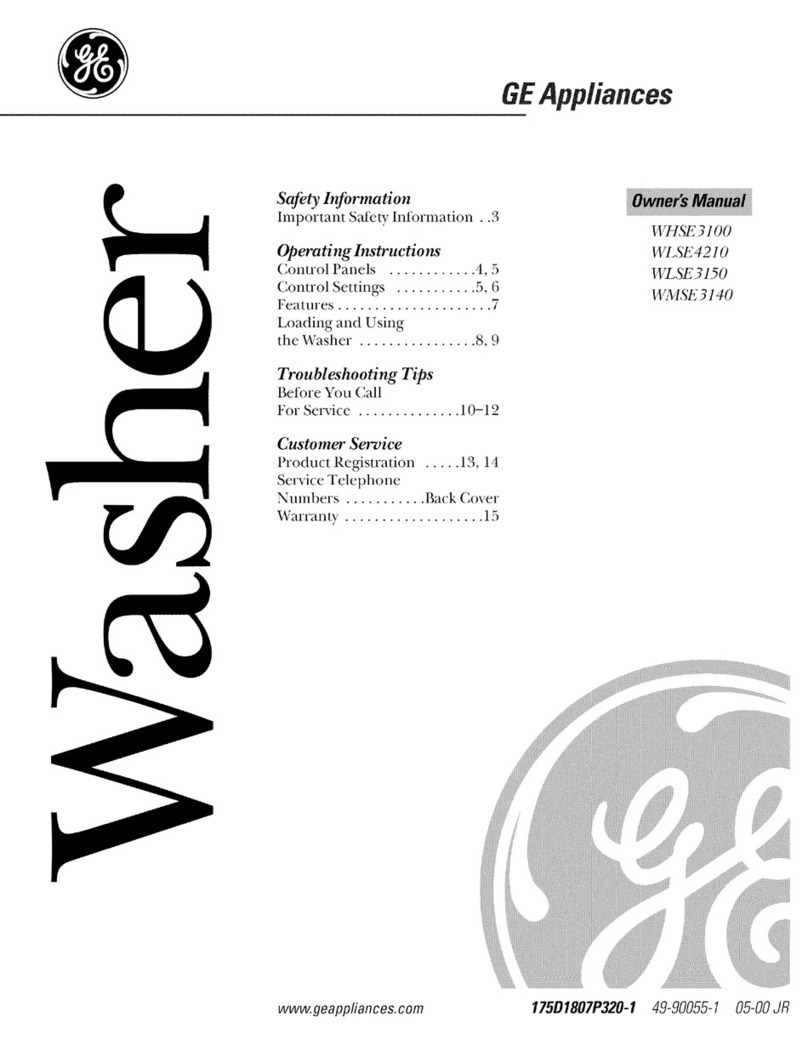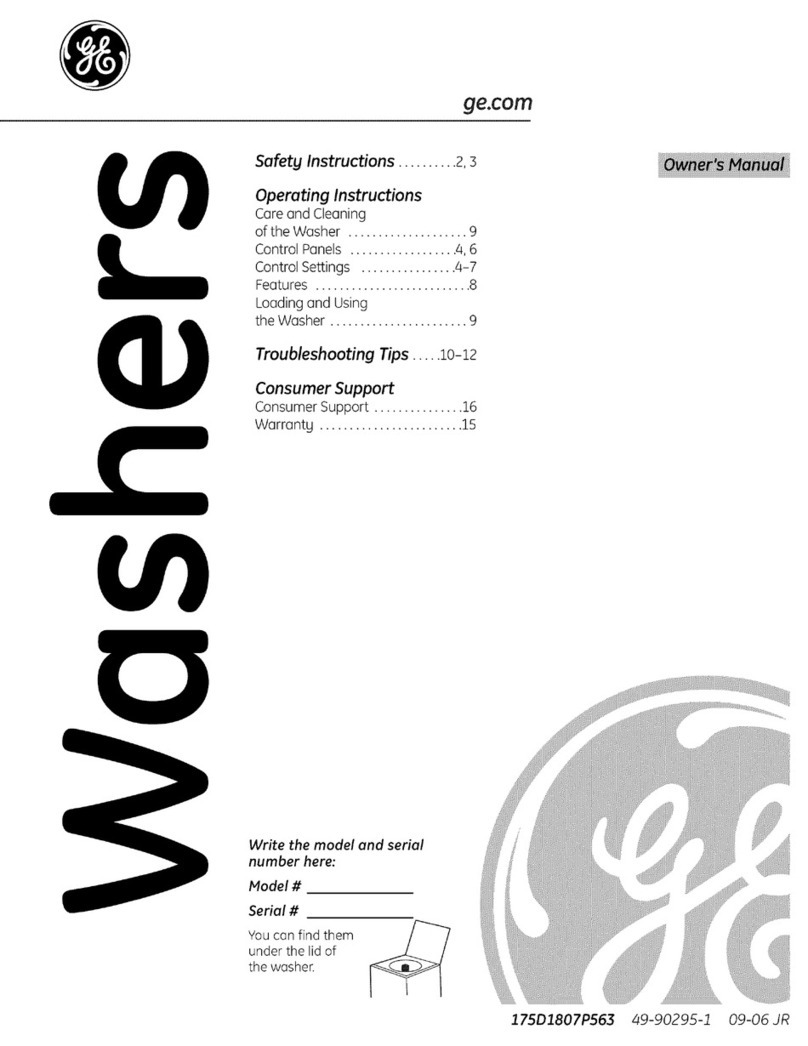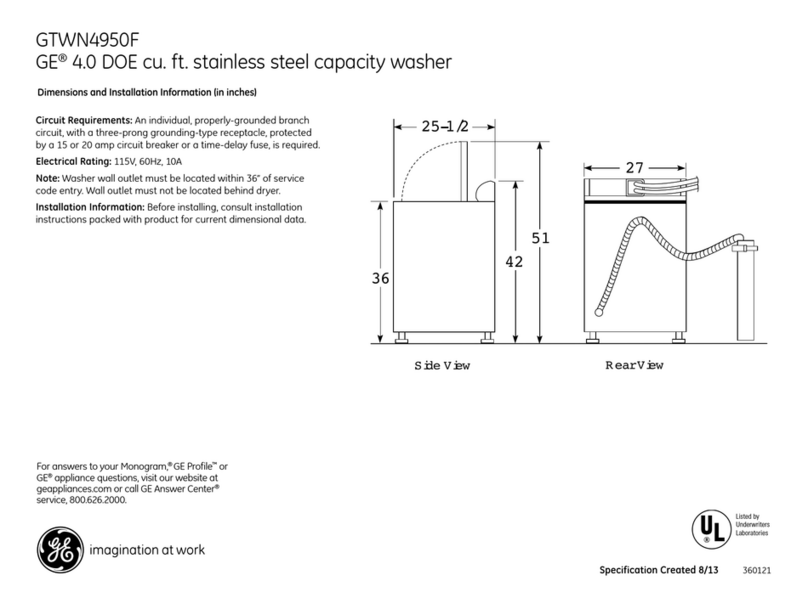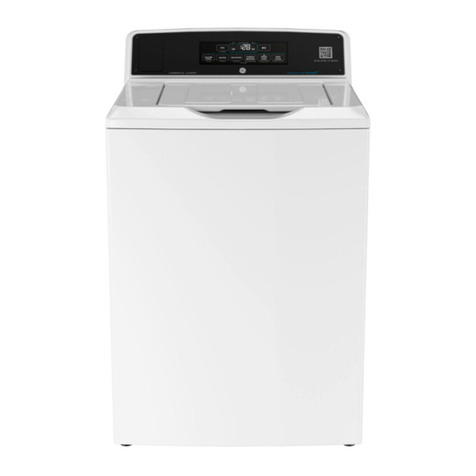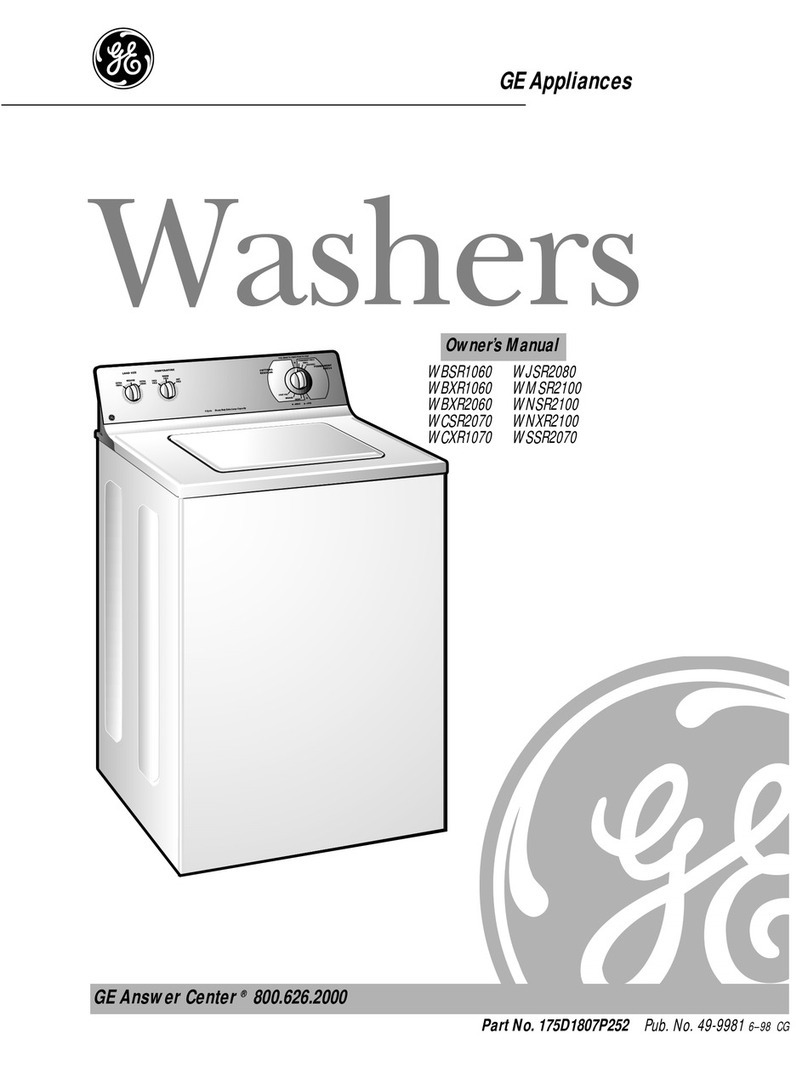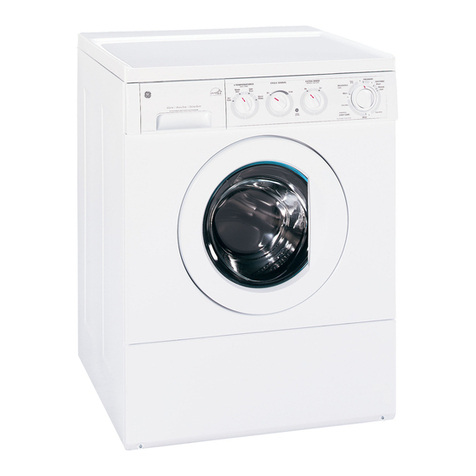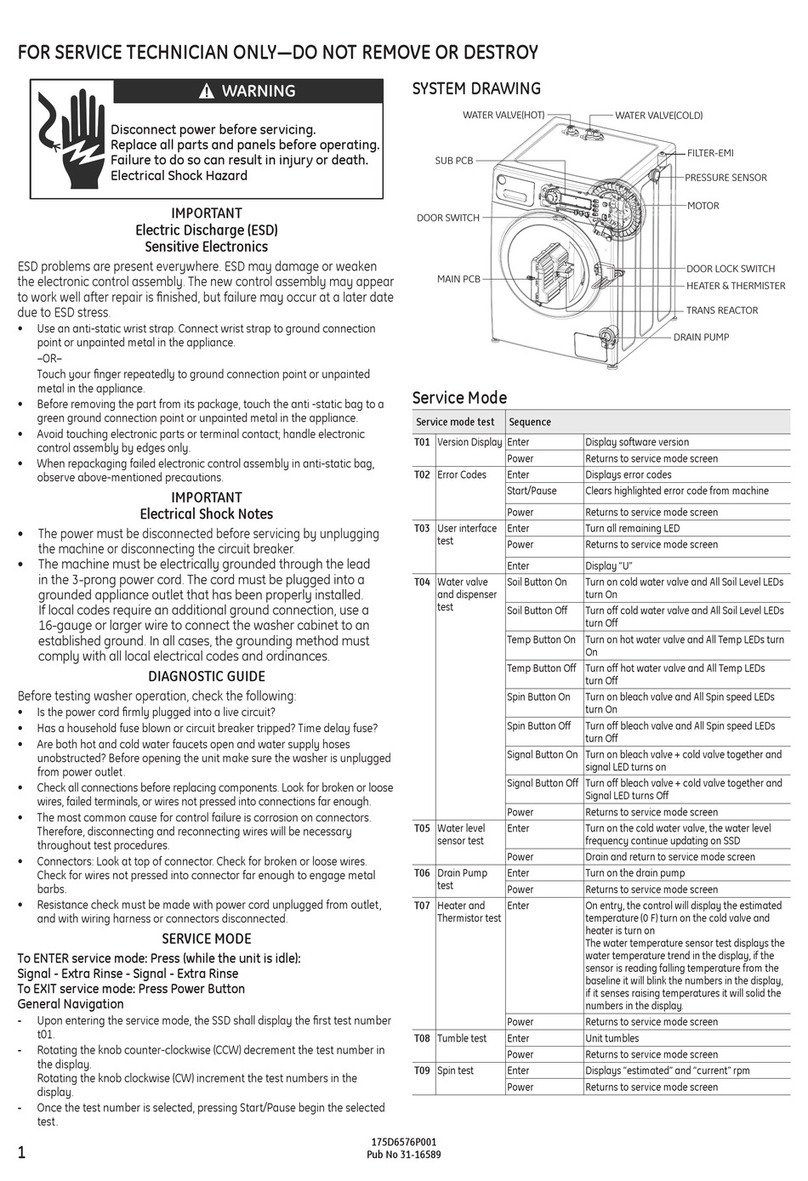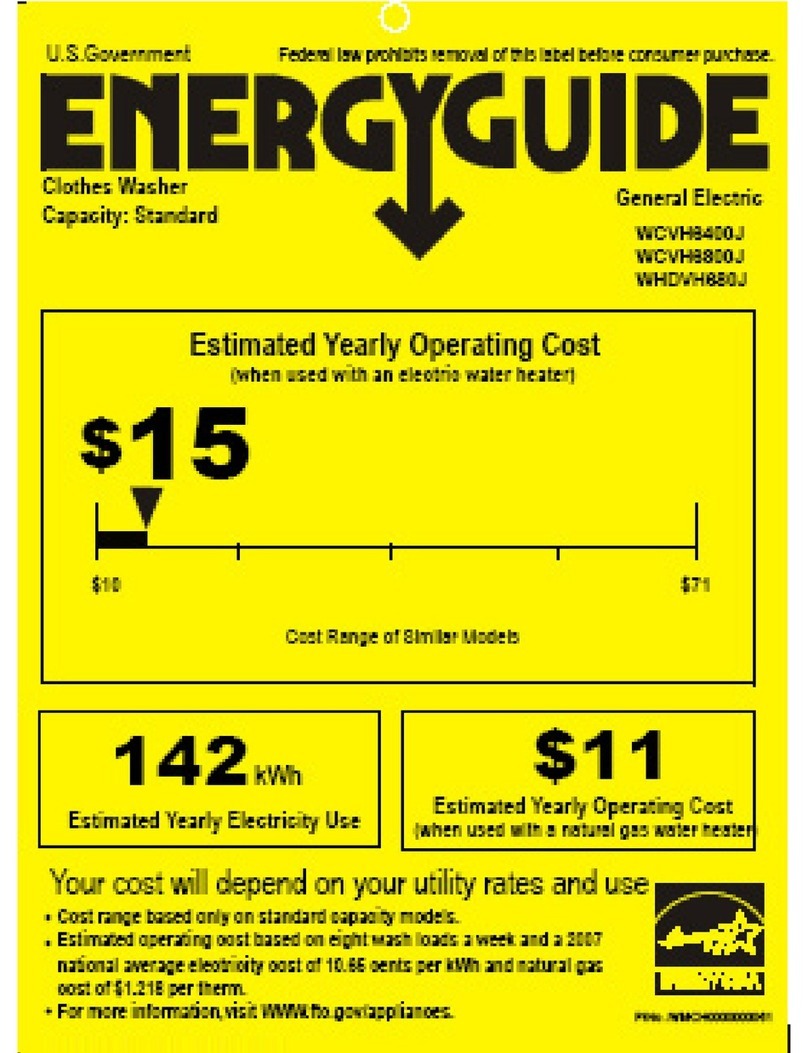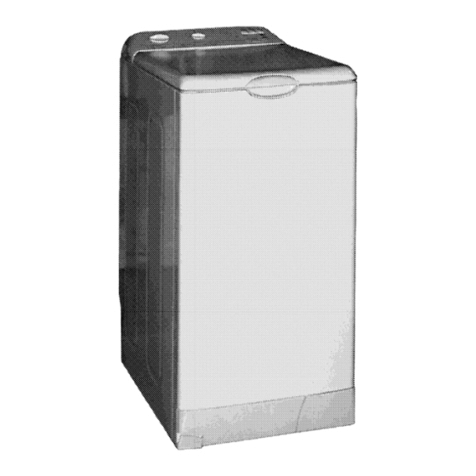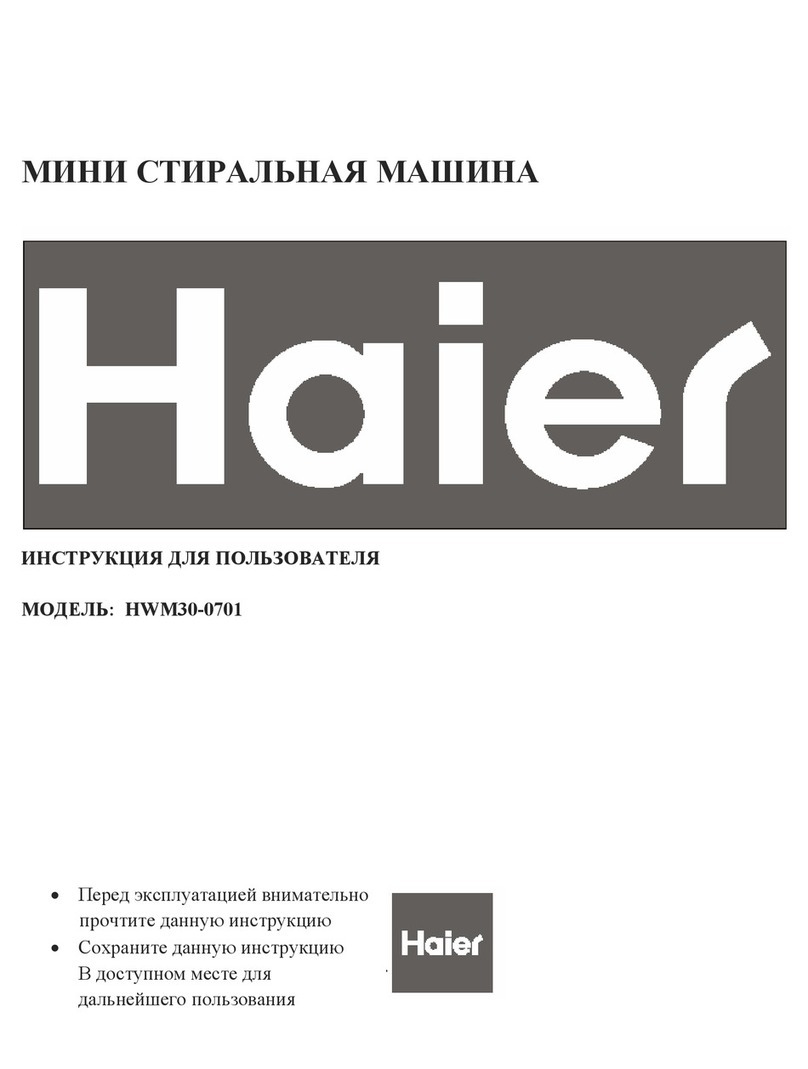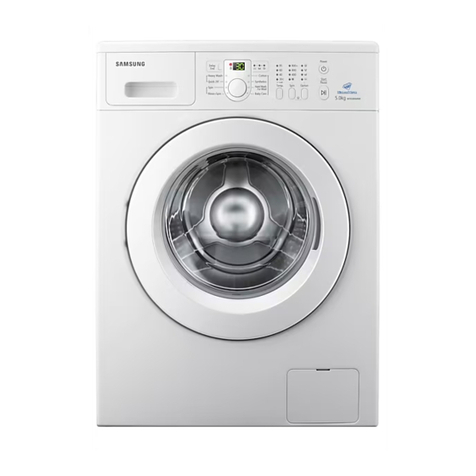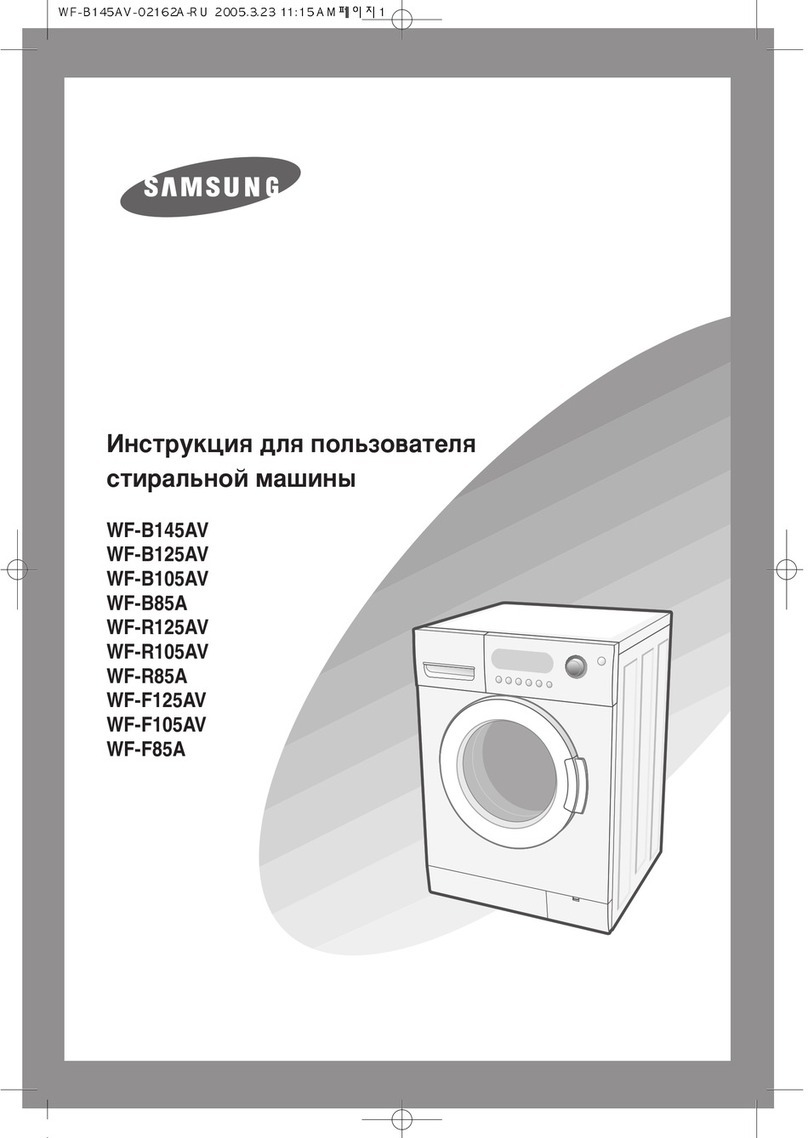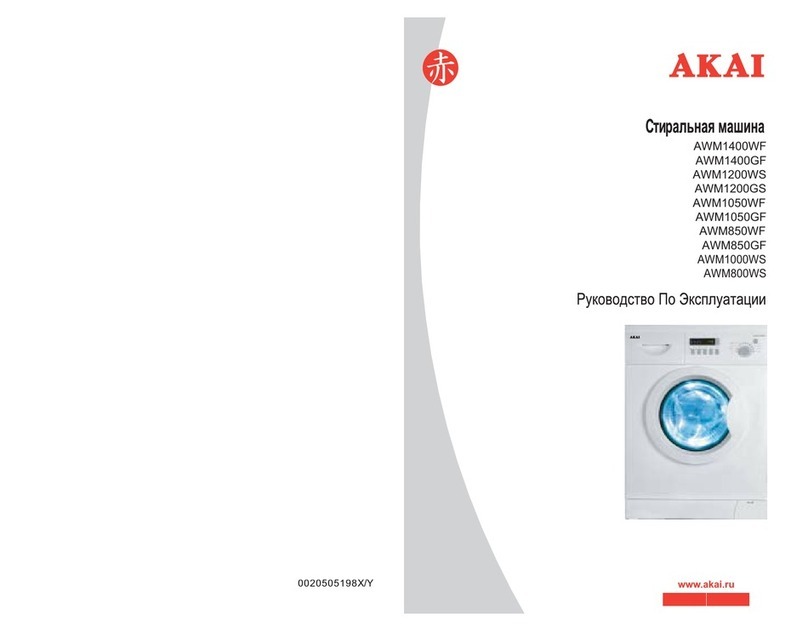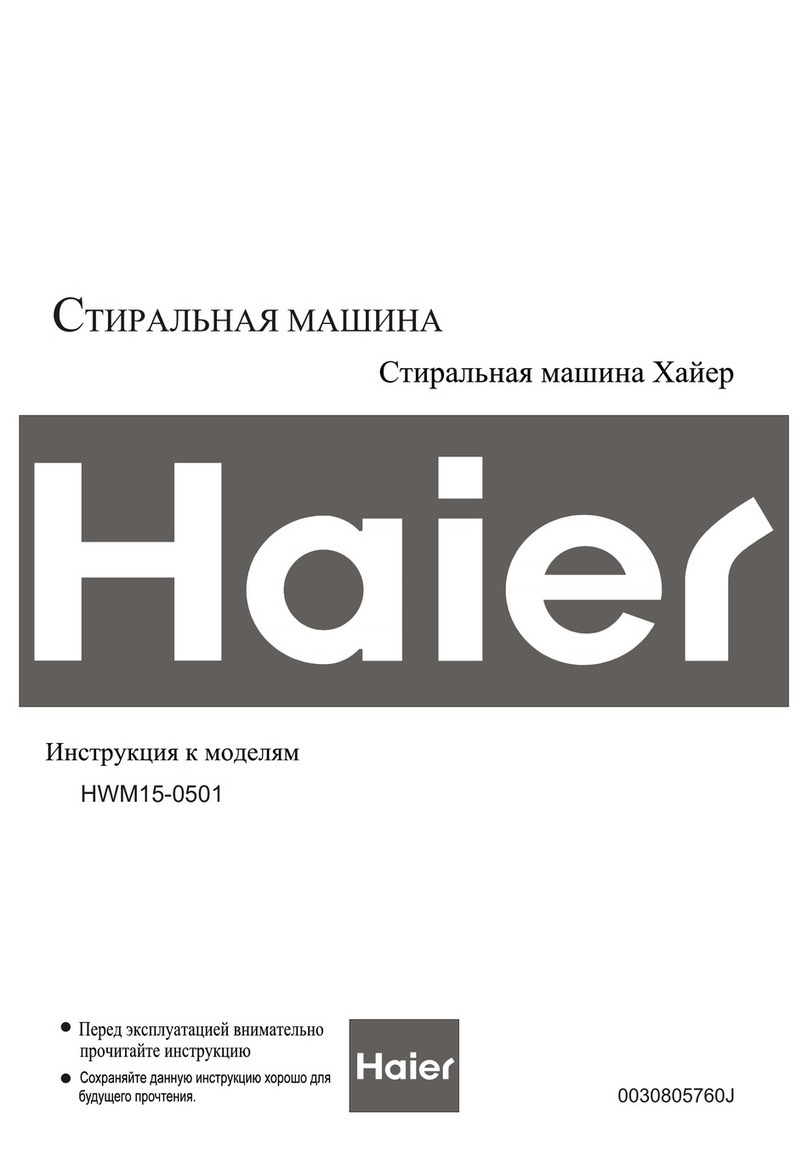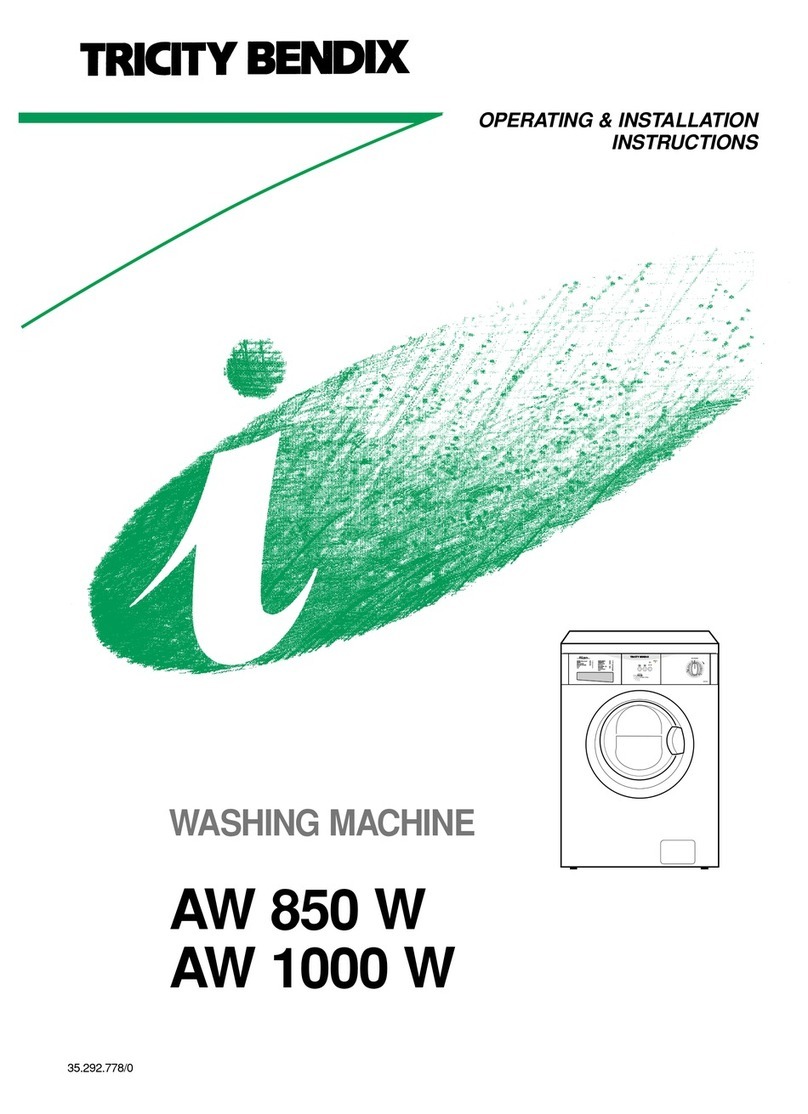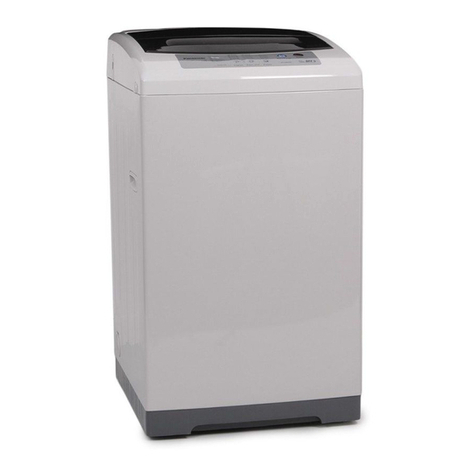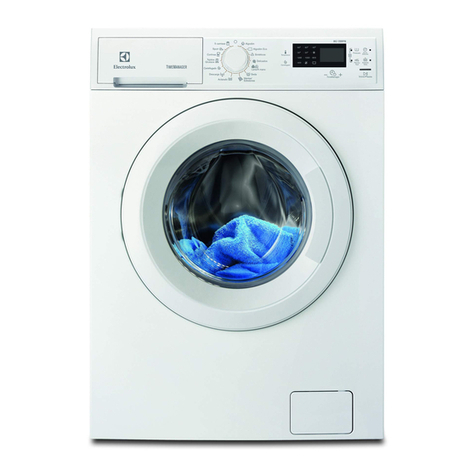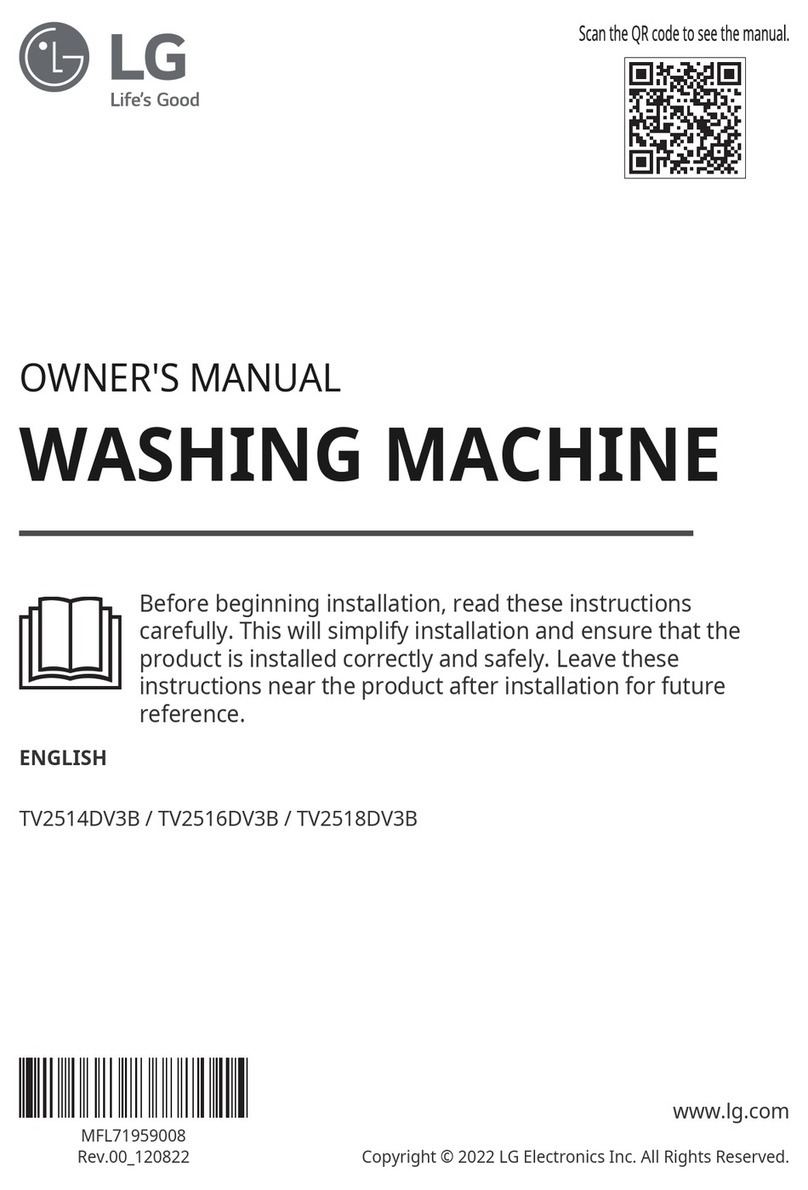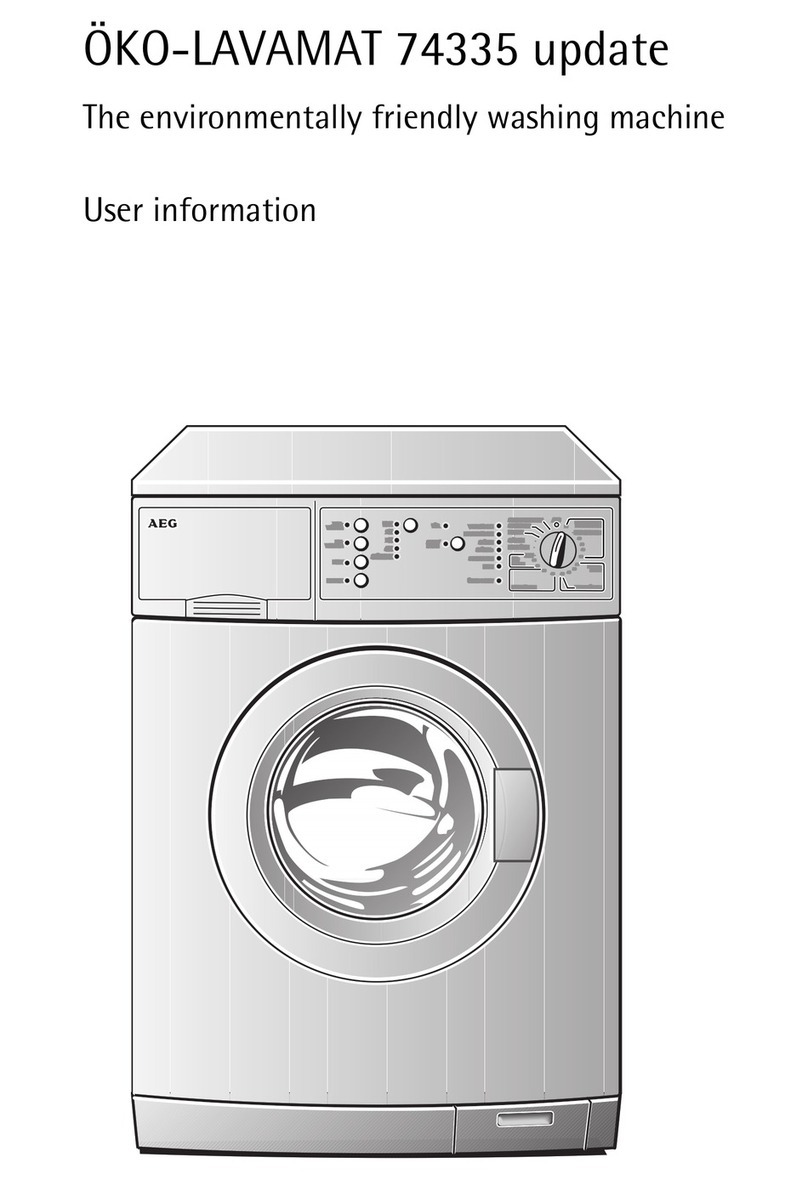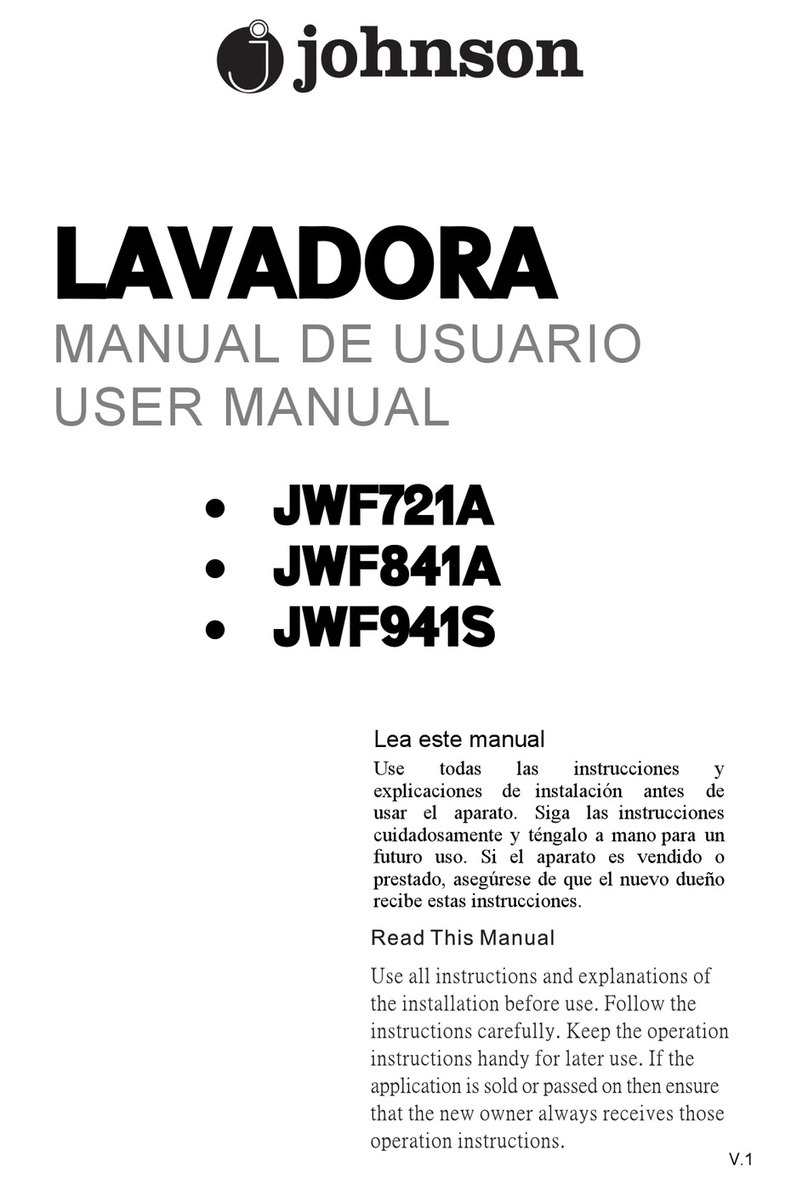IMPORTANT SAFETY INSTRUCTIONS
g+ Read ail instructions before using this appliance.
‘}
W~G–To reduce the risk of
fire, electric shock, or injury to
personswhenusingyourappliance,
followbasicprecautions,including
thefollowing:
.Use this appliance only for its
intended purpose asdescribed in
this Use and Care Book.
●This washer must be properly
installedand locatedin accordance
with the Installation Instructions
beforeit is used. Ifyou did not
receive anInstallation Instructions
sheet with your washer, youcan
obtain oneby contacting the service
location nearest you.
–Properly ground toconform
with all governing codes and
ordinances. Follow detaiIsin
Installation Instructions.
–Install or storewhere it will not
be exposed totemperatures below
freezingor exposed tothe weather.
–Comect to aproperly rated,
protected and sizedpower supply
circuit to avoidelectrical overload.
–Connect to adequate plumbing
and drain ticilities asdescribed in
the Installation Instructions.
.Turnoff~~r ~uce~ when
the washer is not inuse torelieve
pressure on hoses and valves, andto
‘~leakage ifahoseorva.tve
should breakofrupture.
Tominimize the possibility
of injury:
●DOnotmixc~orincbleachwith
ammonia or acids such asvinegar
and/or rust remover. Mixing can
produce atoxic gaswhich may
cause death.
●1)0 not wash or dry articles
that havebeen cleaned in, washed
in, soaked in, orspotted with
combustibleorexplosivesubstances
(such as wax, paint, gasoline,
degreasers, dry-cleaning solvents,
kerosene, etc.) which may ignite
orexplode.
Do not add these substances tothe
wash water,and do not use these
substances around your washer
and/or dryerduring operation.
W-G-HYDROGEN GASis
produced bythe chemical action
within your waterheater and the
gas can accumulate in the water
heaterand/or waterpipes if hot
waterhas not been used for a
period oftwo weeksorlonger.
HYDROGEN GASCANBE
EXPLOSIVE UNDER THESE
CIRCUMSTANCES.Soto prevent
thepossibilityof damageorinjury,
if you havenot used hot waterfor
twoweeksor more, or moveinto a
residence in which the hot water
systemmay not havebeen used for
some time, turn onallhot water
●Close supervision is necessary
if this appliance is used byor near
children. Do notallow children
to play inside, on or with this
appliance or any discar(
appliance. Dispose of discarded
appliances and shipping or
packing materials properly.
Before discarding awasher,or
removing fromservice, remove
the washer lid.
●Keepall laundry aids (such as
detergents,bleaches, fabricsofteners,
etc.) out ofthe reach ofchildren,
preferablyinalockedcabinet. Observe
allwarnings on container labels to
avoidpersonal injury.
●Keepthe area around and
underneath your appliances free
fromtheaccumulation ofcombustible
materials, such as lint, paper, rags,
chemicals, etc.
●Keepthe floor around your
appliances clean and dry toreduce
thepossibility of slipping.
cTominimize the possibility
ofelectric shock, unplug this
appliance from the power supply
beforeattempting any maintenance
or cleaning (exceptthe removaland
cleaning ofthe lint falter).
N(Y1’E:Turning the Cycle Selector
knob toan OFF position does N~
discomect the appliance fkoxnthe
powersupply.
“●Wh!en&scmmecting @s ‘-~faucetsandallow them torun for o~not tamper wWMxWrolsO
“appIiti&puUby thephg rather sseyerqhhipytes~fore using any
“ihanthe%oid”tiwoid ●DOnot opqate this appliance
he to the ekwtricaiapphnce which is
cordwjunctio~ ofcordandplug. connected~the hot watersystem. if it isdamaged,~fi,.AA:.m
;-Makesun$thatthecordislocatfxiso ‘ThiswiilalEovvany hydrogen gas partiallydisassembled, or has
.thatitwillnutbestermed qn, tripped ,,toesca~f%ncethegas is missingor broken p“+C ‘nP*IIA;nm
&tedto “flammable, donot smoke or me adamaged cord or ~
“B&korinpubUshed use&qair in the CycleSelector knob to ‘that maybepicked up byclothing
~‘instructions thatYouunderstand “STOPn position, then wait until during subsequent washer use.
and havetheski~ to carry out. themac~e has completely
stopped beforeopening the lid. I(continued next page)
3
